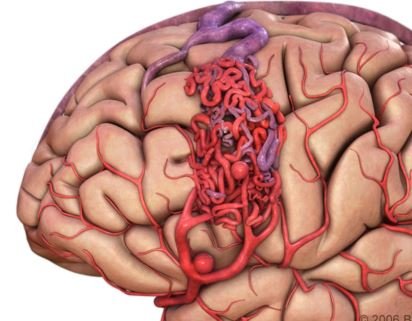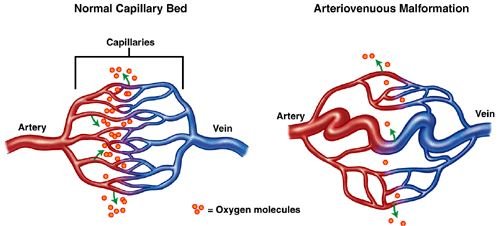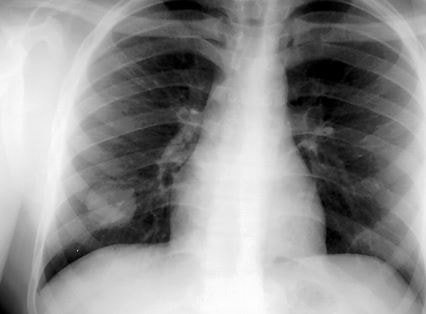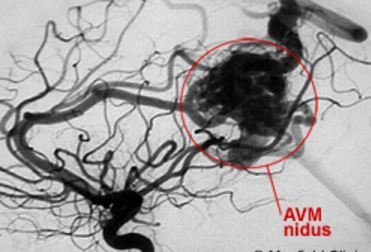Arteriovenous Malformation
Definition
Arteriovenous malformation abbreviated as AVM is an abnormal vascular system defect that involves a complex tangle between the veins and the arteries, which is being connected by one or more fistula in the brain or spine, and that bypasses the capillary system. AVM has been widely known due to its development in the central venous system, although it can happen in other areas of the body.

Arteries and veins perform important functions in the circulatory system. The arteries carry the oxygen-rich blood away from the heart, going to the brain. The veins are responsible in carrying the oxygen-depleted blood in going back to the lungs and the heart.
The capillaries normally connect the arteries and the veins; but in the presence of an arteriovenous malformation, this significant cyclical process is being disrupted, resulting to a snarled tangle of the veins and arteries that become connected with each other without the capillaries.
The incidence of AVM is approximately 1 case for every 100,000 births, affecting both men and women, and may happen before the age of 40. It is known to be the second identified cause leading to a subarachnoid hemorrhage after instances of cerebral aneurysms.
Types of Arteriovenous Malformation
Brain AVMs can occur on the cortical surface, deep into the brainstem, thalamus or basal ganglia, and within the dural space which is the protective covering of the brain.
Dural AVMs are also known as arteriovenous fistulas or AVFs, where the veins of the brain are draining into the venous sinuses, before it leaves the skull and travels back to the heart. The most common AVFs are the dural AV fistulas and the carotid-cavernous fistulas.
Spinal AVMs can arise on the extramedullary surface or within the intramedullary portion of the spinal cord.
Four types of AVMs:
- Arteriovenous malformation produces a high pressure from an abnormal tangle of the blood vessels in which the arteries are directly shunted into the veins, bypassing the capillaries
- Cavernoma produces a low pressure from an abnormal cluster of enlarged capillaries, without any relevant feedings received from the arteries and veins
- Capillary telangiectasia produces a very low pressure from abnormal capillaries where some areas are enlarged and appears similar to a cavernoma
- Venous malformation produces a low pressure from abnormal pressure of enlarged veins that resembles like the wheel spokes and has no feeding arteries. This is usually not treated and it rarely bleeds.
Symptoms of Arteriovenous Malformation
The manifestations of patients with arteriovenous malformations can vary depending on the location of the AVM and its type. Most types of AVMs are asymptomatic; until such time that a bleeding sign is noted.
Common symptoms of brain AVMs:
- Complain of migraine-like headaches
- Seizures are observed
- Sudden onset of severe headache
- Stiff neck
- Vomiting
- Presence of bruit
Common symptoms of spinal AVM:
- Paralysis of the body
- Weakness felt in the legs or arms
- Feeling of sudden, severe back pain
- Unusual sensations of feeling some pain or numbness in an area
Other serious neurological symptoms:
- Loss of vision or visual disturbances
- Difficulty in speaking
- Feelings of confusion
- Severe unsteadiness noted
Causes
The specific cause of an arteriovenous malformation is unknown; though some studies have shown that it can be multifactorial. Some theorists believe that these AVMs develop as babies grow in the utero; while others supported the idea that it can be due to an angiopathic reaction, as a result of a cerebral ischemic attack or from a hemorrhagic event.
Diagnosis
Diagnostic tests are done to determine the specific location of an arteriovenous malformation, its type and size, as well as its involvement with other structures of the body.
- Magnetic resonance imaging allows a detailed view of the soft tissues of the brain
- Computed tomography to view structures within and around the brain
- Angiogram can be used to depict a large AVM located in the parietal lobe of the brain
Treatment
The main treatment goal is to prevent bleeding; although other measures must be considered, so that seizures can be controlled and prevent other neurological complications.
Medications might be used to treat AVM symptoms, like complains of headache or an existing seizure.
Surgery is the most common management done for brain AVM, and the options are:
- Surgical removal/resection by temporary removal of a skull portion in order to gain access to the AVM
- Endovascular embolization is used to reduce an AVM size or to decrease some symptoms which are stroke-like in nature
- Stereotactic radiosurgery destroys the AVM by means of radiation
Pictures

Image 2 – Cerebral AVM
 Image 3 – Difference Between Normal blood vessels Vs AVM
Image 3 – Difference Between Normal blood vessels Vs AVM

Image 4 – CXR showing Pulmonary AVM

Image 5 – Angiography showing AVM Nidus
References:
http://emedicine.medscape.com/article/1160167-overview
What treatments are available? for AVM are http://www.mayfieldclinic.com/PE-AVM.htm#.Vl6v73YrLIU
http://www.mayoclinic.org/diseases-conditions/brain-avm/diagnosis-treatment/treatment/txc-20130139
Laakso A, Dashti R, Juvela S, Niemelä M, Hernesniemi J (2010). Natural history of arteriovenous malformations: presentation, risk of hemorrhage and mortality. Acta Neurochir Suppl. 107:65-9.
Weinsheimer S, Kim H, Pawlikowska L, Chen Y, Lawton MT, Sidney S, et al (2009 Oct). EPHB4 gene polymorphisms and risk of intracranial hemorrhage in patients with brain arteriovenous malformations. Circ Cardiovasc Genet. 2(5):476-82.
Halim AX, Johnston SC, Singh V (2004 Jul). Longitudinal risk of intracranial hemorrhage in patients with arteriovenous malformation of the brain within a defined population. Stroke. 35(7):1697-702.
